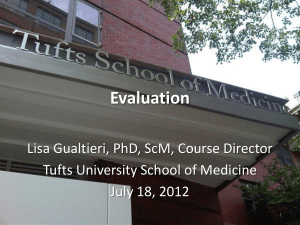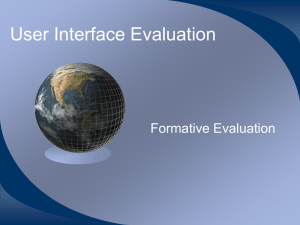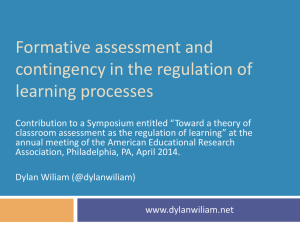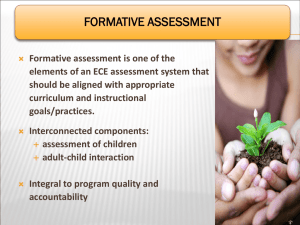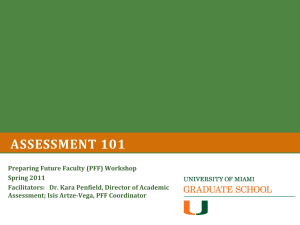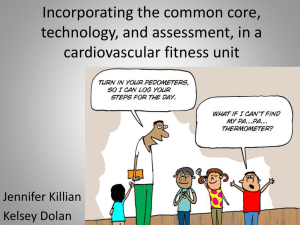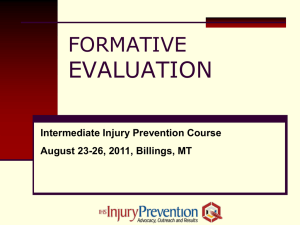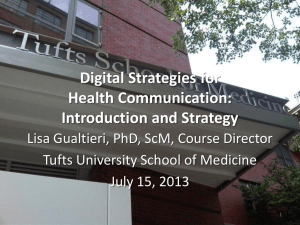slides - Home | Tufts University School of Medicine Public Health
advertisement
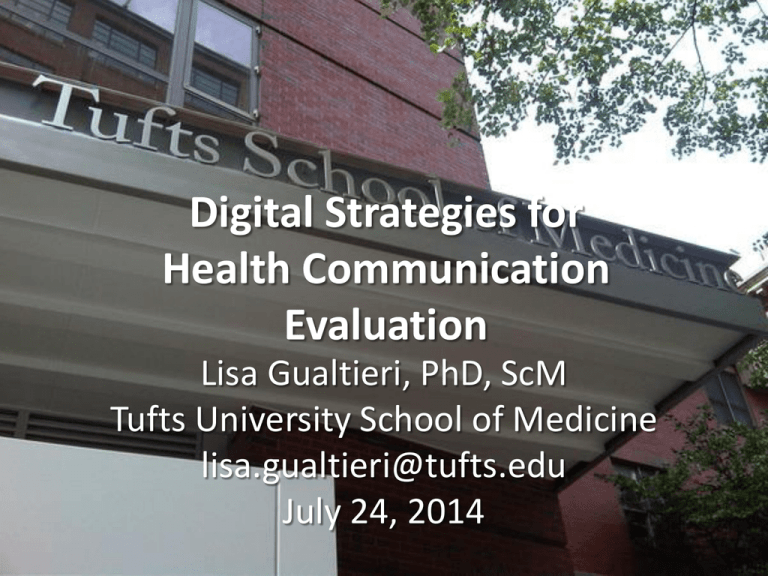
Digital Strategies for Course overview and structure Health Communication Evaluation Dates: May 23-June 20, no class May 28 Times: 5:30-8:30pm ET + team meetings What to do if missing all or part of class? Meet in person: for class session, separately, or not at all? Twitter and other social media Social media survey Online course feedback: you are not guinea pigs! Questions: Lisa Gualtieri, PhD, ScM Tufts University School of Medicine lisa.gualtieri@tufts.edu July 24, 2014 l.gualtieri@tufts.edu, cell: 781-330-9456 dickie.wallace@tufts.edu, cell 413-335-3803 1 Mobile First • Designing for mobile first instead of retrofitting existing practices into mobile format 2 Where are mobile phones and tablets used? 56% Living room 53% Bedroom Work 42% 12% Restaurant/coffee shop 32% Kitchen 34% Hotel 30% 30% 29% Bathroom Airport/airplane Events 26% 9% Train/subway/bus School Library 6% 6% 6% 51% 44% 41% mobile 28% 14% Home office Church or place of worship 41% 39% 32% 36% Other room in my house Bank 45% 29% Stores Other 48% 31% Car 79% 49% 35% Outdoors 88% 35% tablet* 18% 18% 15% 17% 15% 15% 16% 13% Base: 2,116 US online adults who own a mobile phone; Base: 549 US online adults who own a tablet Source: North American Technographics Telecom And Devices Online Recontact Survey, Q3 2011 (US) Search to apps 4 What do mobile devices provide health seekers? • • • • Immediacy and access Affinity Multiple methods of input/output Context Top 10 health searches 2011 Web Mobile • • • • • • • • • • • • • • • • • • • • 1. Cancer 2. Diabetes 3. Symptom 4. Pain 5. Weight 6. Infection 7. Virus 8. Diet 9. Thyroid 10. Sleep • Healthline Networks 1. Chlamydia 2. Bipolar disorder 3. Depression 4. Smoking/quit smoking 5. Herpes 6. Gout 7. Scabies 8. Multiple Sclerosis 9. Pregnancy 10. Vitamin A How to develop an evaluation plan • • • • Evaluate to increase success at achieving your goals Evaluate as often as possible from conception to launch Gather data post-launch Techniques to evaluate – Expert reviews, heuristic evaluation, and formative evaluation • The stages at which you will conduct evaluations and what will happen • For each evaluation: – What are your goals pertaining to appeal, usability, and effectiveness – The number and demographics of the people you will test and how you will recruit and compensate them – Questions to ask 7 Expert reviews • Expert reviews are conducted by “experts” from multiple perspectives and focus on the site using the knowledge of the expert in a domain • Who are experts? 8 Heuristic evaluations • Heuristic evaluations use a set of heuristics or a checklist – Does the site meet certain usability criteria – Does the site meet the stated purpose 9 Formative evaluation • Formative evaluation is a type of usability evaluation that helps to "form" the design for a product or service • Purpose of formative evaluation is to obtain user feedback during the design and development stages of a project • Feedback is generally in three areas: appeal, usability, and effectiveness at accomplishing a task • Formative evaluation can be conducted on concepts, paper prototypes, screen mock-ups, a working prototype, or an alpha release, with the 10 goal of using the feedback to improve the design at the earliest possible stages when the cost of making changes is lower Formative evaluation: receive feedback early when easier to change • • Use incentivized subjects close to target audience Guide through scripted tasks using a think aloud protocol – What do you expect…? – What are your first impressions when you see the screen? – Where do you want to start and what do you expect to happen? • Hardest to provide context and measure effectiveness at achieving goal Formative evaluation process start Script sessions Conduct sessions Compile results Review and prioritize Issues detected Develop Redesign Context • Real or simulated context – Environmental – interruptions, movement, noise, multitasking, etc. – Psychological—motivation, emotional barriers, level of engagement – Usability—appealing, easy to accomplish tasks, develop new ones • Techniques – Field tests – Participatory design – Market response 12
